

Gerhard Habl
"Sextet for Zemlinsky"
Duration: 17'
Instrumentation details:
flute
clarinet in Bb
piano
violin
viola
violoncello
"Sextet for Zemlinsky"
Translation, reprints and more
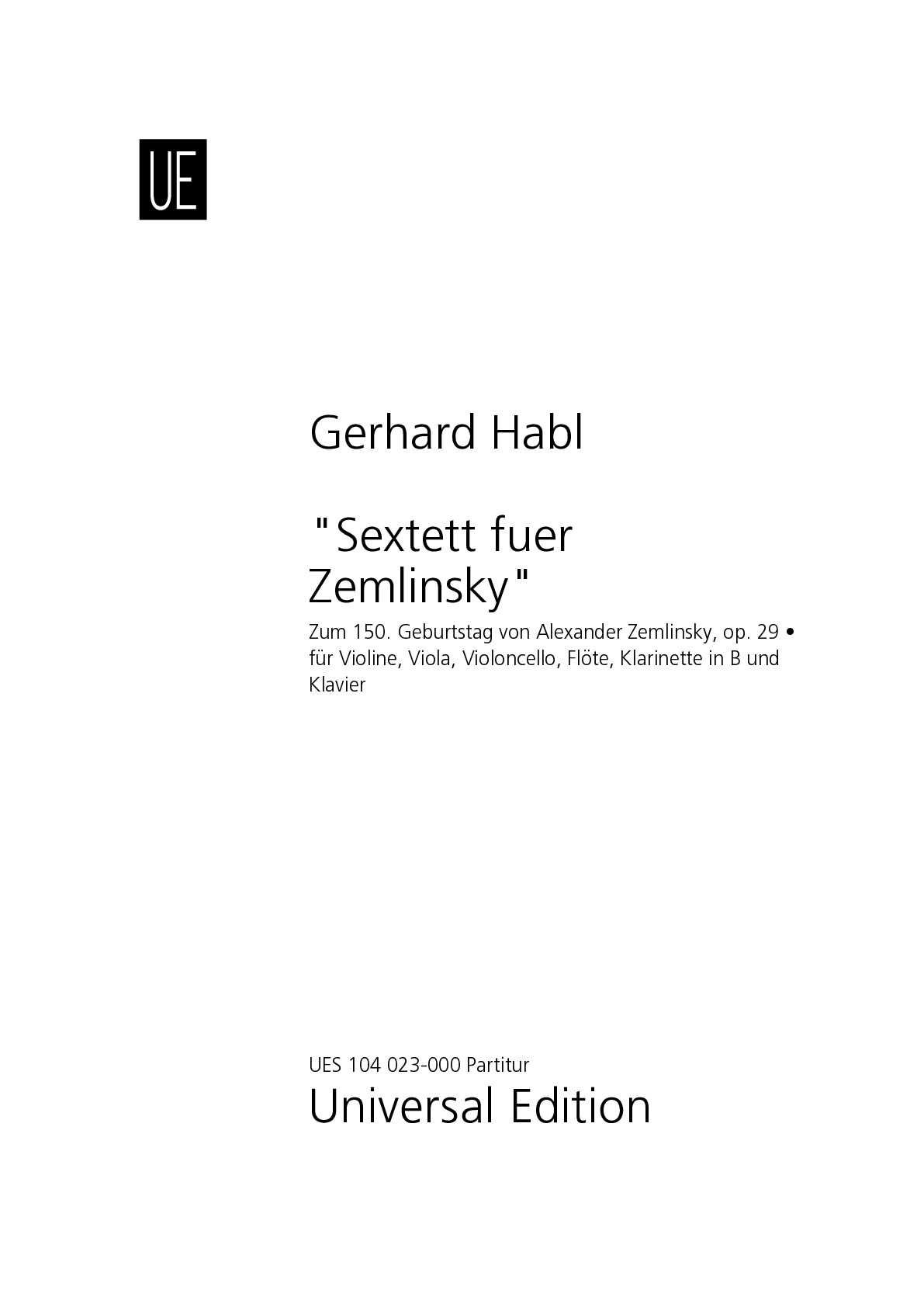
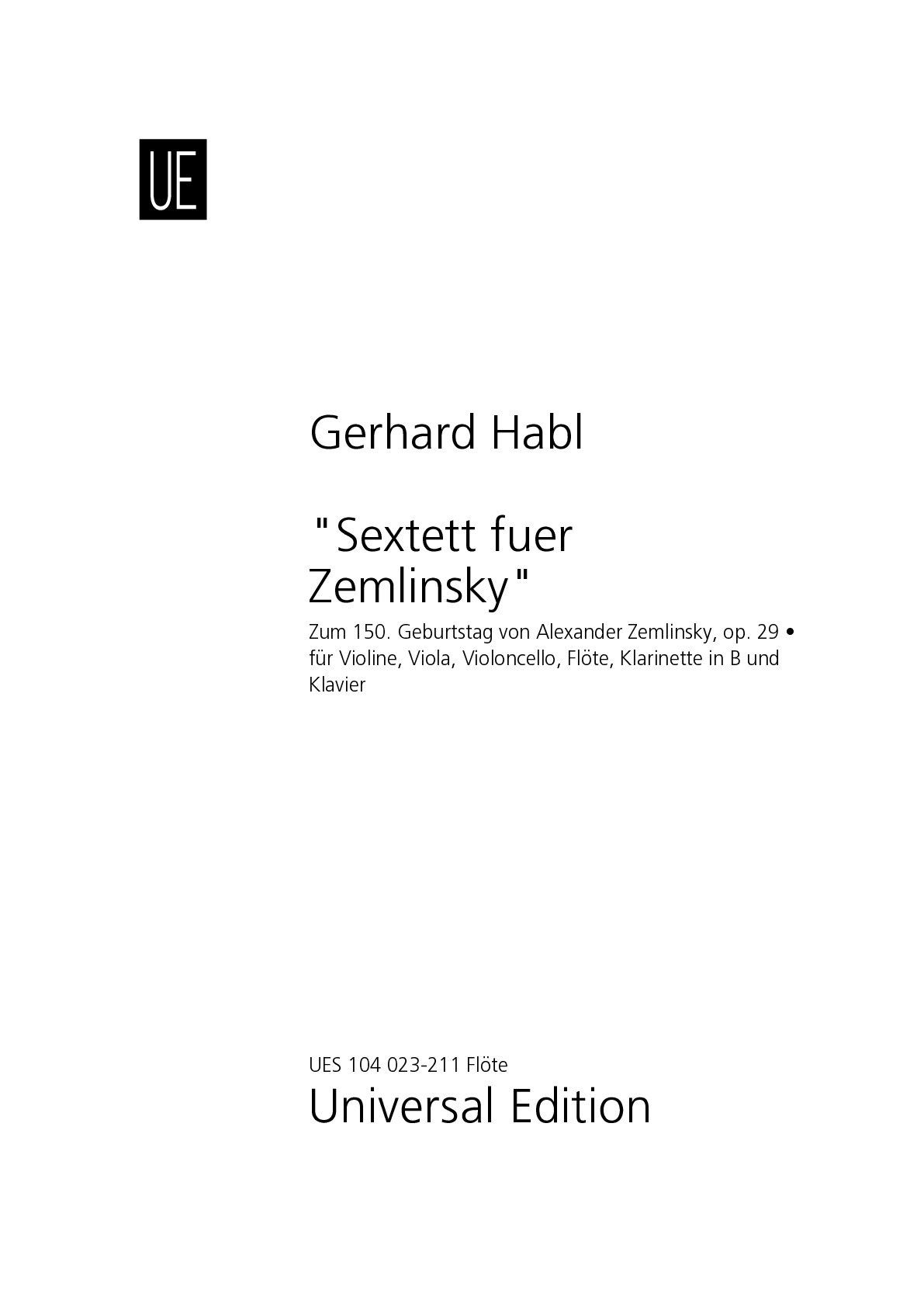
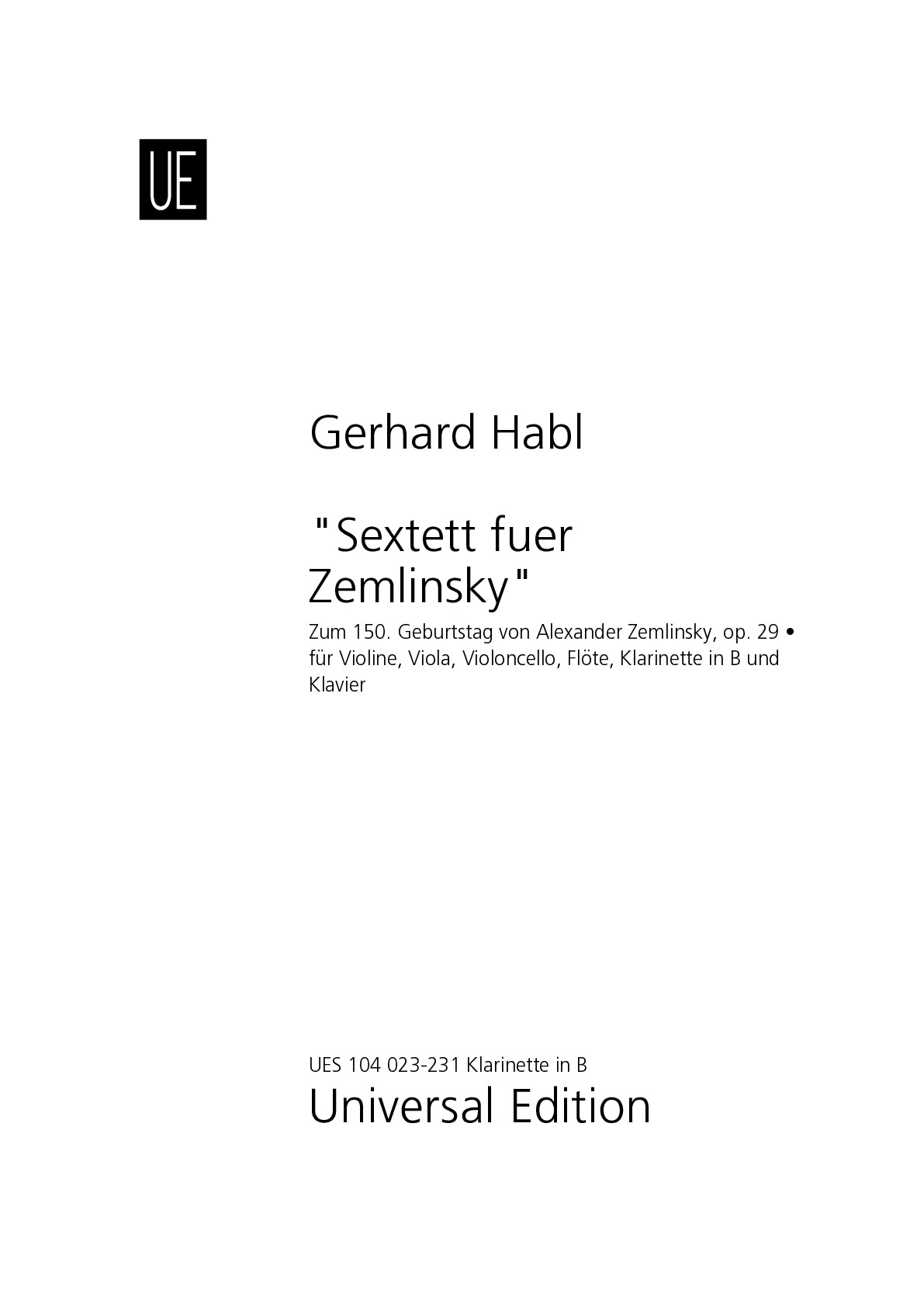
Gerhard Habl
Klarinette in B ("Sextett für Zemlinsky")Type: Stimme

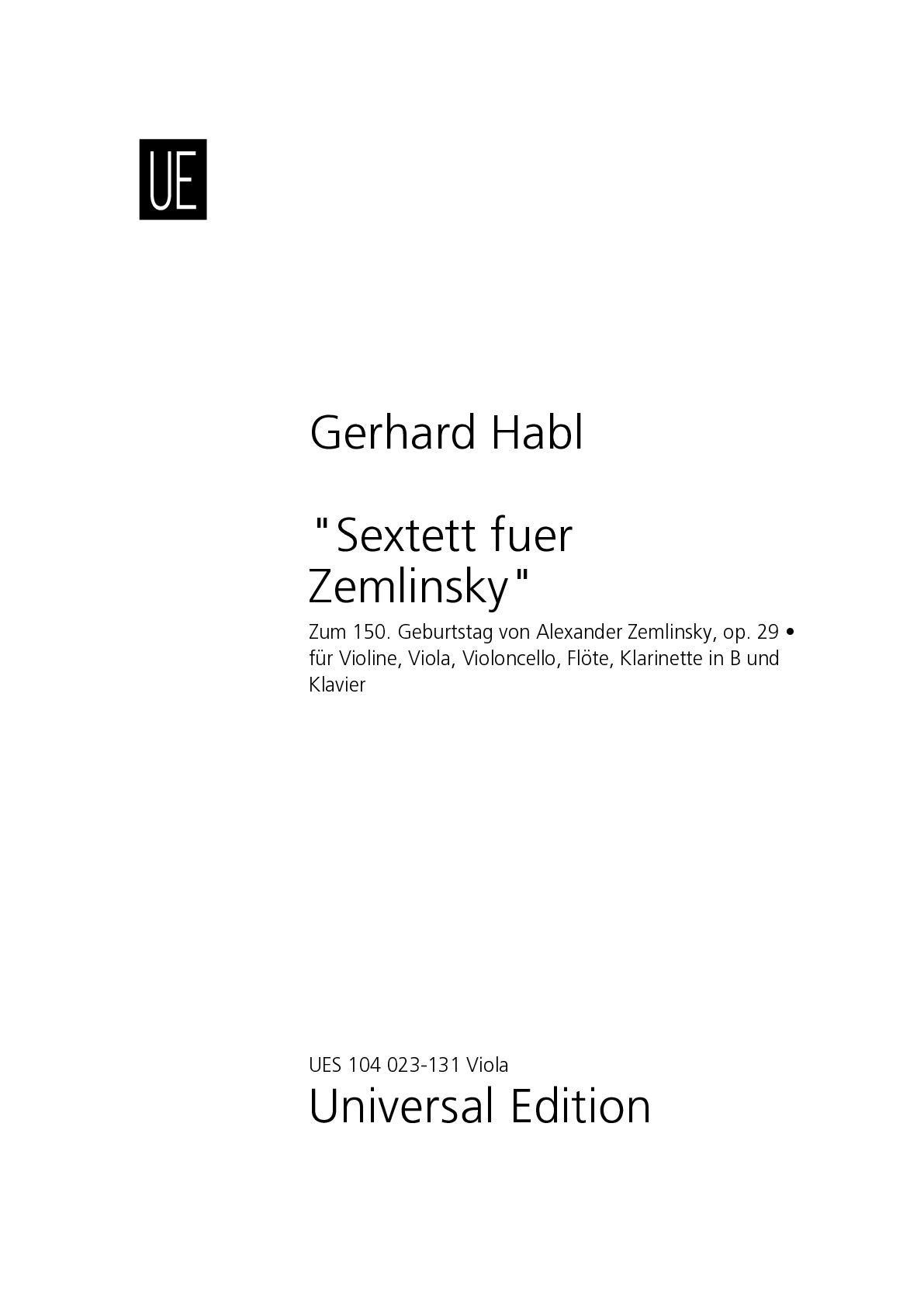
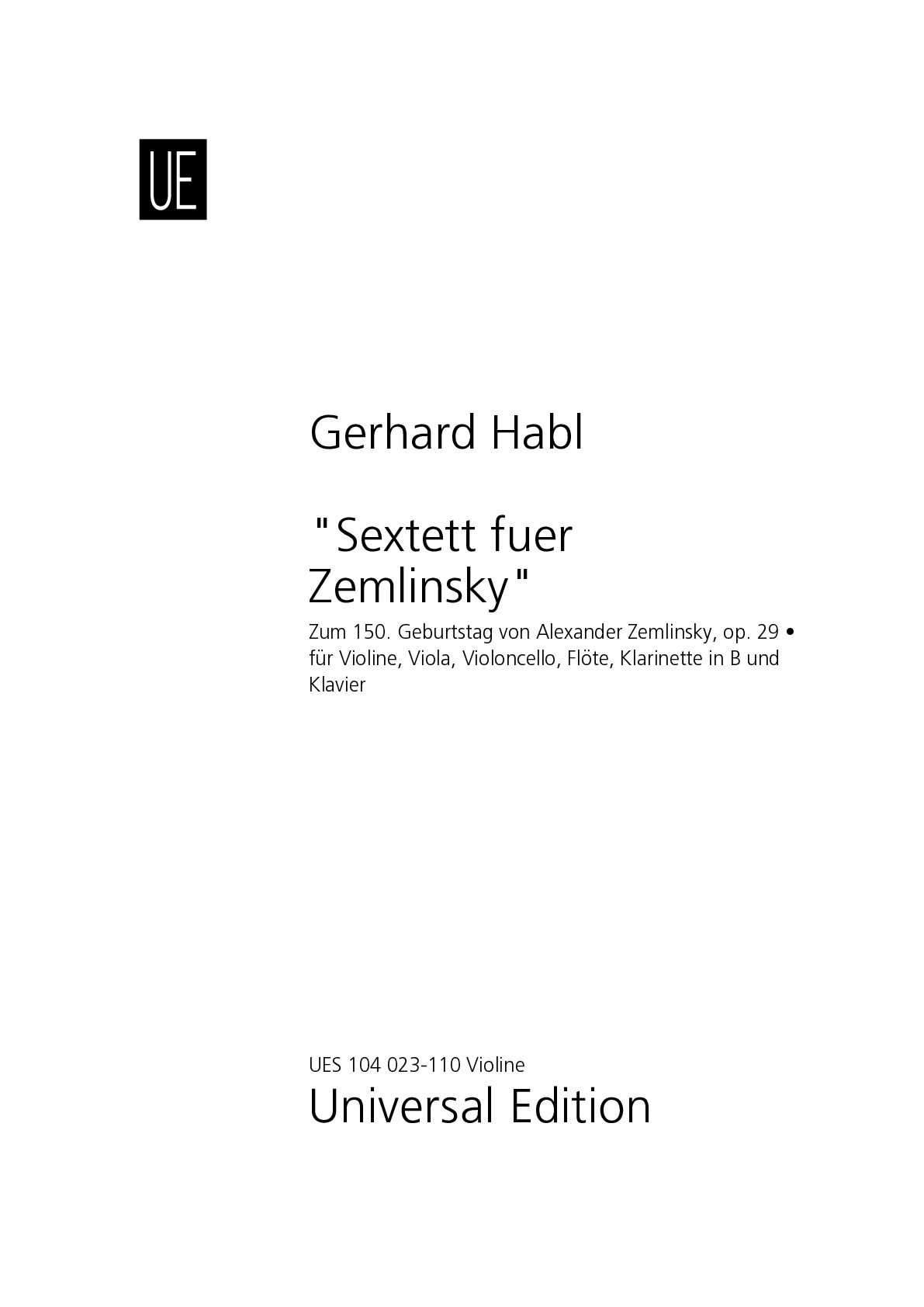
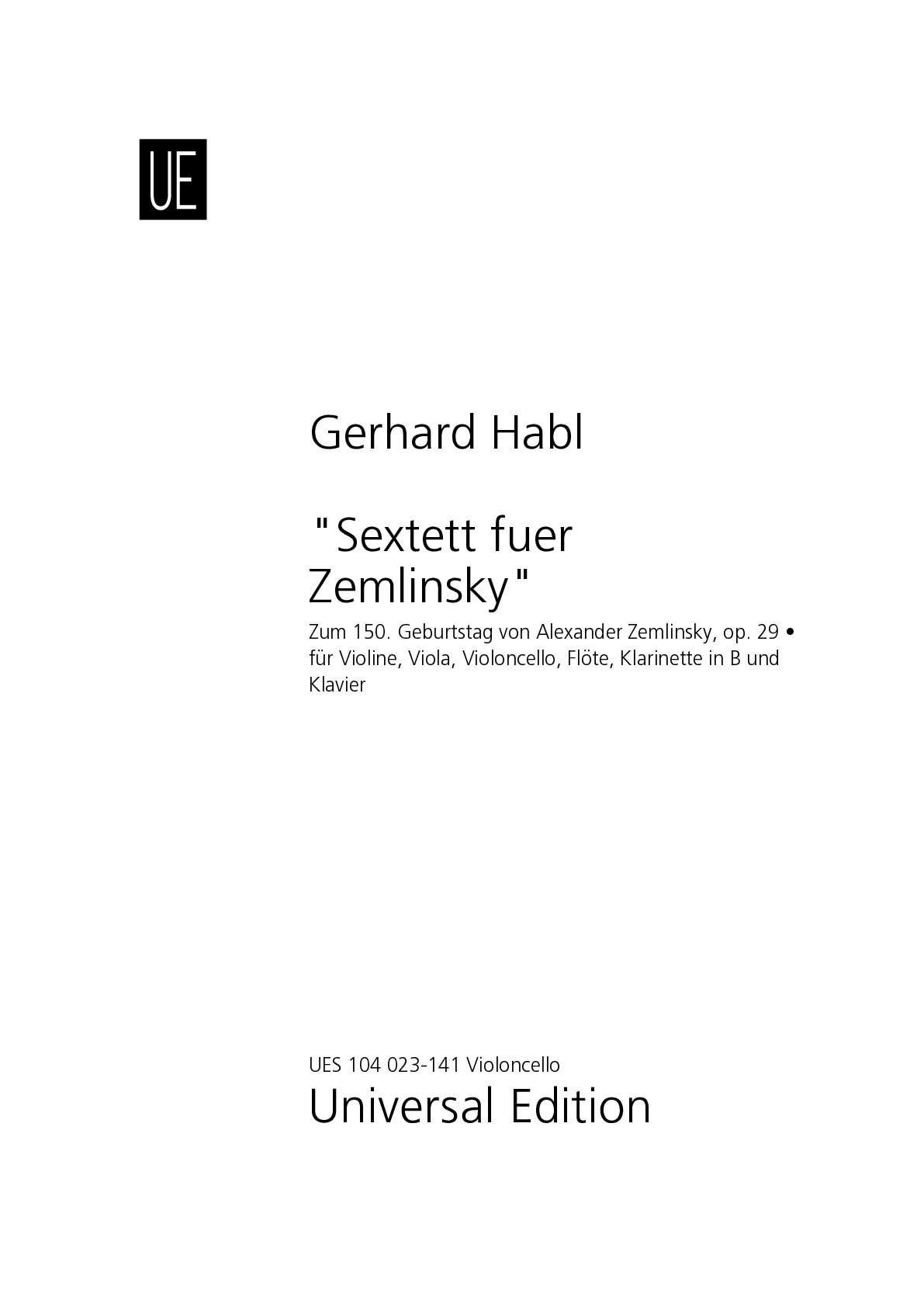
Audio preview
Work introduction
The ‘Sextet for Zemlinsky‘ is a piece of music commissioned by the State of Lower Austria to Gerhard Habl on the occasion of the commemoration of the 150th birthday of the Austrian composer Alexander Zemlinsky (1871, Vienna -1942, Larchmont, USA, in exile) and the appraisal of his musical accomplishments.
The sextet, for flute, clarinet, piano, violin, viola, and violoncello, is not an attempt to imitate Zemlinsky’s style of composition, but rather an effort to establish a relationship to the honoree with original ideas.
The eventful 1. Movement (Allegro agitato) features an ascending theme in a kind of ‘race’, where whole tone steps and semitone steps alternate. The small semitone steps ‘start’ with a ‘lead’ of a fifth, but are soon ‘overtaken’ by the bigger whole tone steps. This basic structure offers many possibilities for converting intervals and groupings, derived from the main theme, in various shades.
The 2. Movement (Andante) with the subheading ‘To Alma’ deals with the love attachment of Zemlinsky to his student Alma Schindler (later Mahler/Werfel). A quiet main theme describes the blossoming feelings, subsequent ascensions hint at the bubbling up of mutual desire, occasional pensive phases at mood swings. During the reprise of the main theme, the intensified addition of the flute to the voice-leading clarinet symbolises togetherness, which- as we know- did not last long. That is why the movement ends with a ‘musical sigh’ and a major/minor mixed chord.
The opening theme of the lively 3. Movement (Allegretto vivace) starts with 4 distinctive notes, which determine the following sequence (varied in different ways), and a descending whole tone step figure, which gain harmonic importance through manifold modifications. A scherzo-like dialogue of quiet and rhythmic segments develops, and leads to an energetic conclusion.
